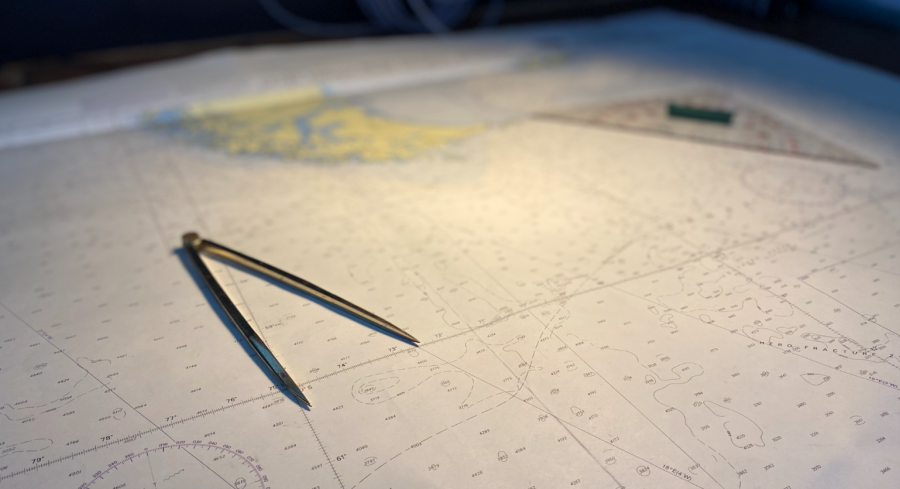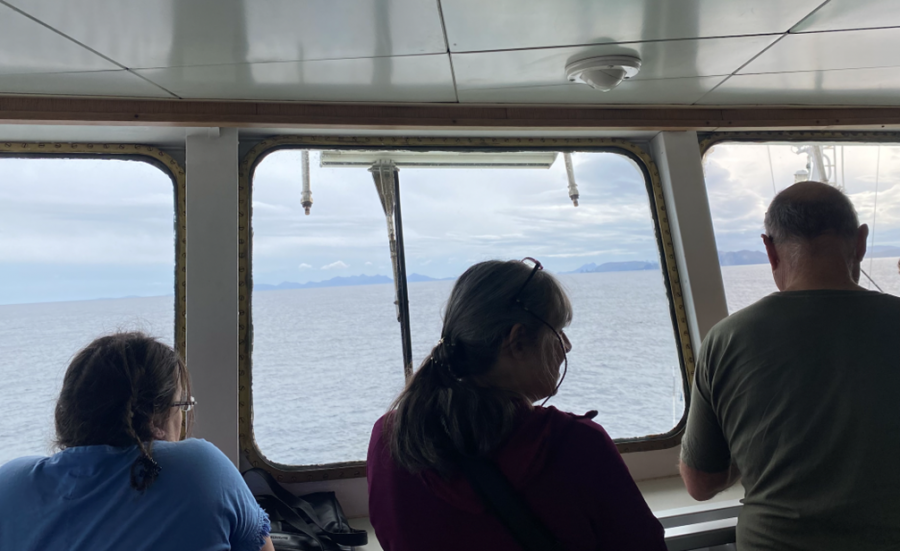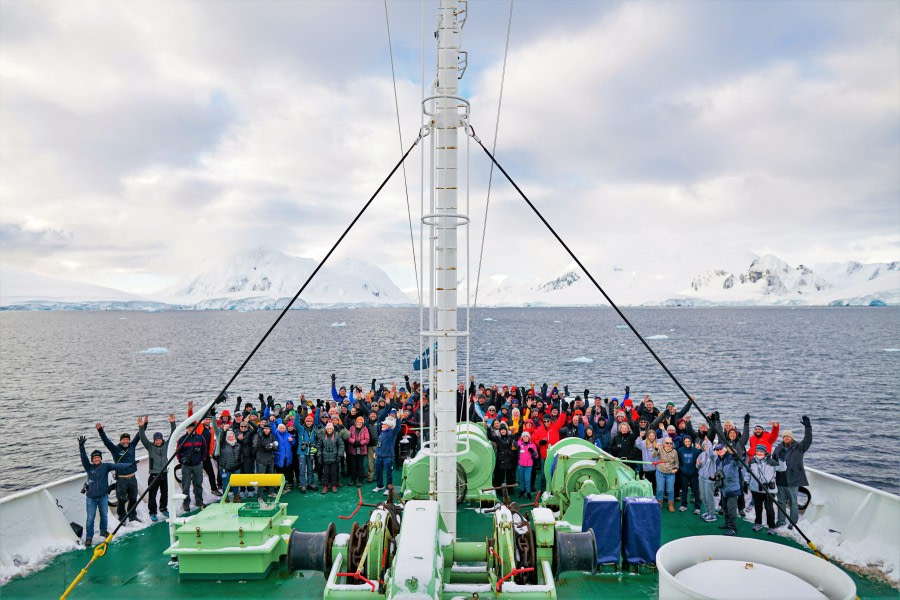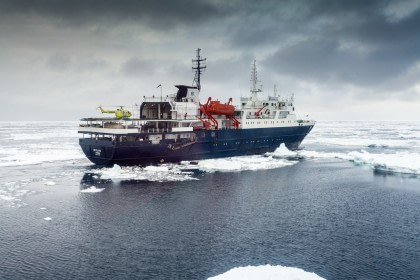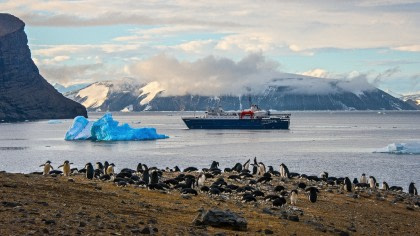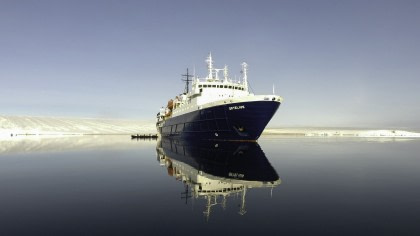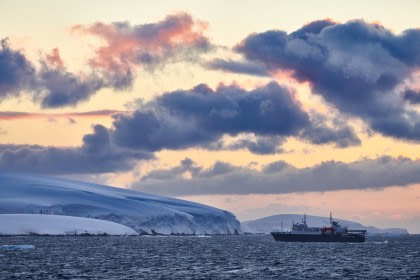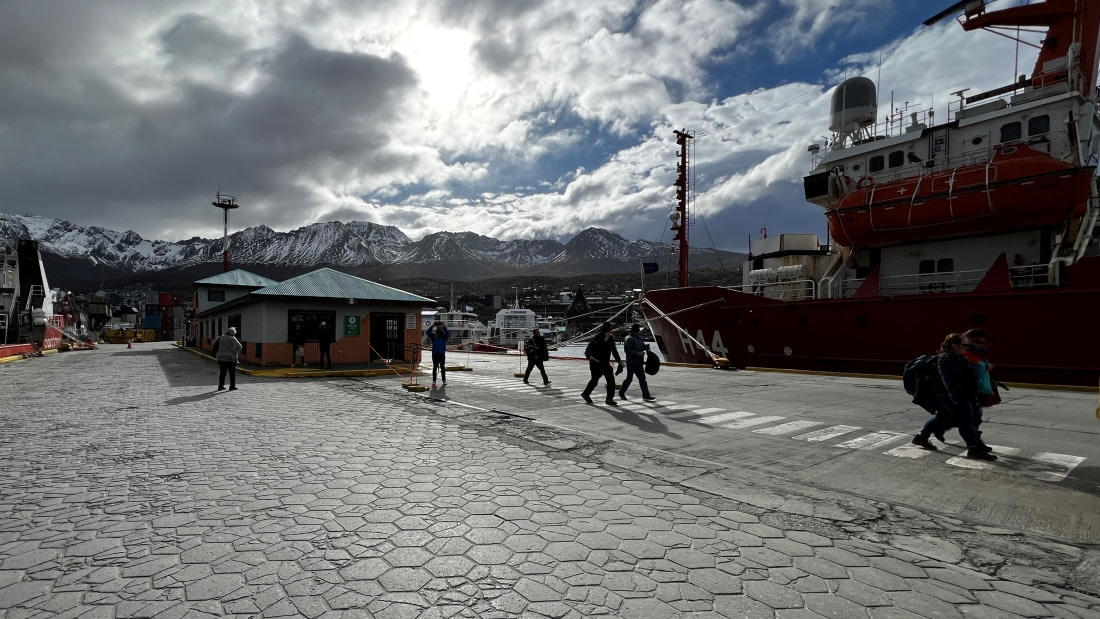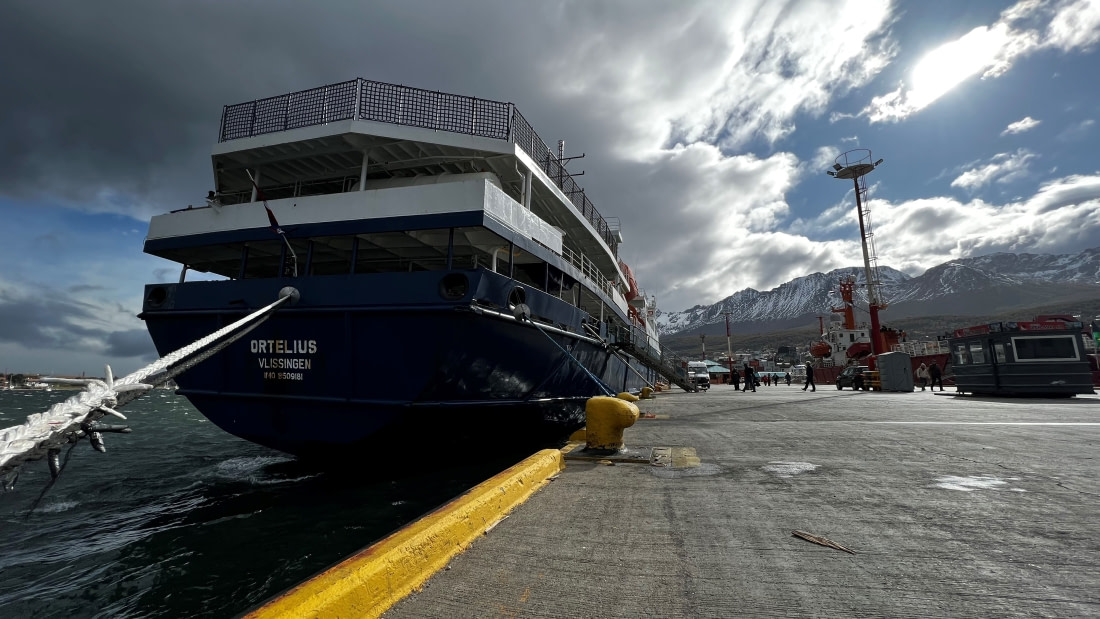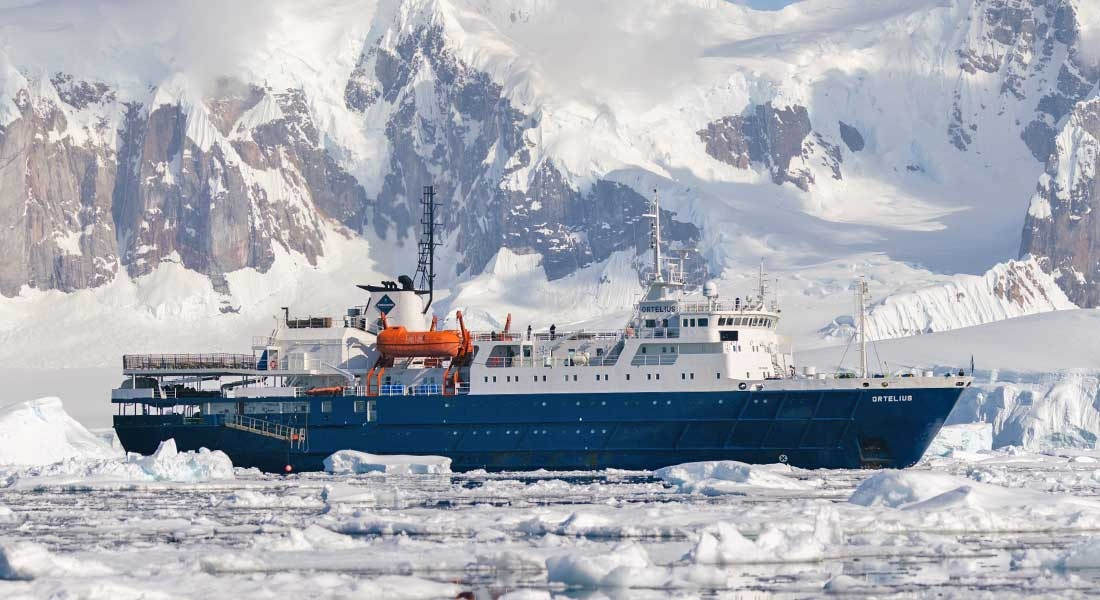| Date: | 20.03.2023 |
| Position: | 54°48.6’S / 68°17.8’W |
| Wind: | W7 |
| Weather: | Cloudy |
| Air Temperature: | +6 |
Every great journey begins with a single step, physical or emotional. For many of us the seed of adventure bore from a dream, years or even decades earlier, to venture to a kingdom of ice and snow beyond an endless and often angry sea. To stand on the shoulders of giants, to “piece the veneer of outside things” and busk in the raw splendour of our planet. The destination we have set our ambition on is the last great pristine wilderness left on earth, Antarctica. At least we make good on our desires, today we earnestly embark on an expedition of a lifetime.
Leaving behind our own worlds, we fly from all corners of the globe to reach the starting point of our odyssey, Ushuaia – the end of the earth. Awaiting us is our home for the next 14 days, the mighty and august Ortelius, a ship that has spent much of her storied life charting the icy waters of coldest extremities of our planet. As we savour the final moments of terra firma, we make our way up the gangway were we are welcomed onboard by our Expedition Leader Allen White, the expedition team and crew, new faces who will together show you great wonders on our journey deepest South.
Greeted by our venerable Hotel Manager Albert and assistant Andi, we are shown to our rooms. We unpacked and ventured out to explore our ship. With five passenger decks, the Ortelius has extensive outside deck space, split dining room and the Metallica-famous “krill’em All” Bar. Allan calls over the PA system for us to gather in the lecturer theatre for the mandatory SOLAS safety briefing by Chief Officer, Mikael. In one of those “I hope I never need to do this for real” presentations, we listen intensely to the safety procedures and feature of Ortelius. This was followed by the compulsory abandon ship drill, we wandered to the bar or restaurant, lifejacket in hand. We were soon after introduced to the two spaces we hoped to never need frequent, the lifeboats.
SOLAS Completed, we reassembled in the lecturer theatre in which were introduced to Andi, assistant Hotel Manager who gave us whistlestop tour of Ortelius and her facilities. Allan was up next with an overview of the following 24-48 hours. Lurking outside the Beagle Channel was a great purple monster – a fierce weather front passing through the infamous Drake Passage. The wind whipped around Ortelius that afternoon, pushing her close against the peer. We all felt a distinct list - a learn of the ship as the wind pushes against Ortelius high sides. We would have to wait until the early hour before the Port would allow us to leave and so we prepared ourselves for a quiet and stable first night moored to dry land.
Before dinner, we joined our master and commander, Captain Per in the bar for the traditional Captain’s toast followed by introduction to our expedition team. Glasses raised we descended upon the restaurant for our first sampling of Chef Heinz and his team’s fine work. After dinner we returned to the lecturer theatre for our mandatory briefing; how to safely board a zodiac and how to best protect Antarctica pristine environment when we finally step ashore. With the purple monster blowing outside, we went to bed that night wondering what lay outside the shelter harbour of Ushuaia and more importantly, what awaited us on the wild and distant shores of Terra Incognita…
